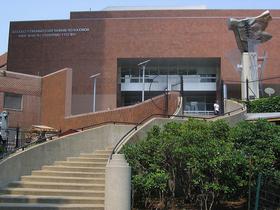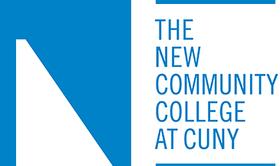A debate has been raging in the world of higher education recently, after for-profit colleges launched attacks on community colleges. In the wake of the first, and much anticipated, White House Summit on Community Colleges, criticism has been circulating about the "unsavory recruitment practices" of these institutions, according to a report on Inside Higher Ed. Community colleges have also been accused of providing less-than-stellar academic quality, course availability, and individual attention to students. Now, community colleges are fighting back against accusations, with a new study designed to point out the differences between these institutions and their for-profit counterparts.
This video looks at the pros and cons of attending a community college.
Just How Similar?
The American Association of Community Colleges recently released a brief titled, "Just How Similar? Community Colleges and the For-Profit Sector." The study focuses on the fundamental differences between community and for-profit colleges that make it difficult to compare the two types of institutions according to the criteria that have been used recently. According to a press release on PR Newswire, while the post-secondary institutions may offer a number of common programs, that tends to be where the similarities end. These institutions serve a widely different population, which results in different outcomes and success rates overall.
Some of the differences noted in this study include:
- A higher ratio of minority students at community colleges. More than half of all Hispanic students and 40% of Black, Native American, and Alaskan Native students were enrolled in community colleges in 2008, according to the study results posted at the American Association of Community Colleges website.
- A lower number of full-time students in community colleges. Only around 40% of community college students are enrolled full-time, compared with 90% of the students at for-profit colleges. These numbers also increase the graduation rates at for-profit colleges.
- A higher number of transfer students at community colleges. When transfers to other institutions are factored into the comparison, community colleges and for-profit institutions are much closer in terms of their completion rates than they are when simple graduation rates are considered.
- Students going for certificates or short-term programs at community colleges. Not every student who enrolls in community college is there to earn a two-year degree. Some students are seeking certification in their chosen field or simply want to get more training through community college classes. While these students affect the actual graduation rates at the colleges, they do not indicate failure by the institutions to fully educate students, as the initial numbers indicated.
- The oversight of the institutions. Community colleges are publicly governed by elected or appointed trustees. In contrast, for-profit institutions are owned by individuals, partnerships, or collaboratives. Some are corporations that are publicly traded, meaning they are accountable to stockholders interested in making a profit rather than to the students attending the institution.
- The incidence of student loans. About 90% of students attending for-profit colleges take out student loans to pay their tuition, as opposed to just 10% of community college students. For-profit institutions also have the highest default rate on student loans.
With so many fundamental differences between for-profit and community colleges, it is easy to see why recent comparisons between the two may be a matter of debate. A comparison of apples to oranges does not typically provide the information necessary to make an accurate assessment of either subject.
This video looks at the differences between community and four year colleges.
Why the Study was Conducted
The author of the brief and the association's director for policy analysis, Christopher M. Mullin, told Inside Higher Ed that the brief is "not to win a debate or to suggest public policies that might logically emanate from those differences, but to show why commonly drawn comparisons between community colleges and for-profit institutions are far less meaningful than some might suggest." While the report is not in direct response to any other study, Mullin did believe it was important to clarify some points in the midst of the ongoing debate between the different types of institutions.
Gail Mellow, president of LaGuardia Community College in New York, applauded the brief and told Inside Higher Ed, "When you compare all of that lobbying to one small, lovely, written report, you have a sense of the David vs. Goliath battle that's going on here." Mellow also called attention to the fact that according to the report, for-profits spend about 31% of their total budget on marketing and recruiting, while community colleges spend about 3% on advertising.
This video examines the differences between community and four year colleges.
While the debate over the quality of education between community colleges and for-profit institutions continues, it is important for students and their parents to understand the fundamental differences between the two types of institutions. When you begin to compare apples to apples, you get a better sense of which type of college really will be the better fit for each individual student.
Questions? Contact us on Facebook. @communitycollegereview
























































































